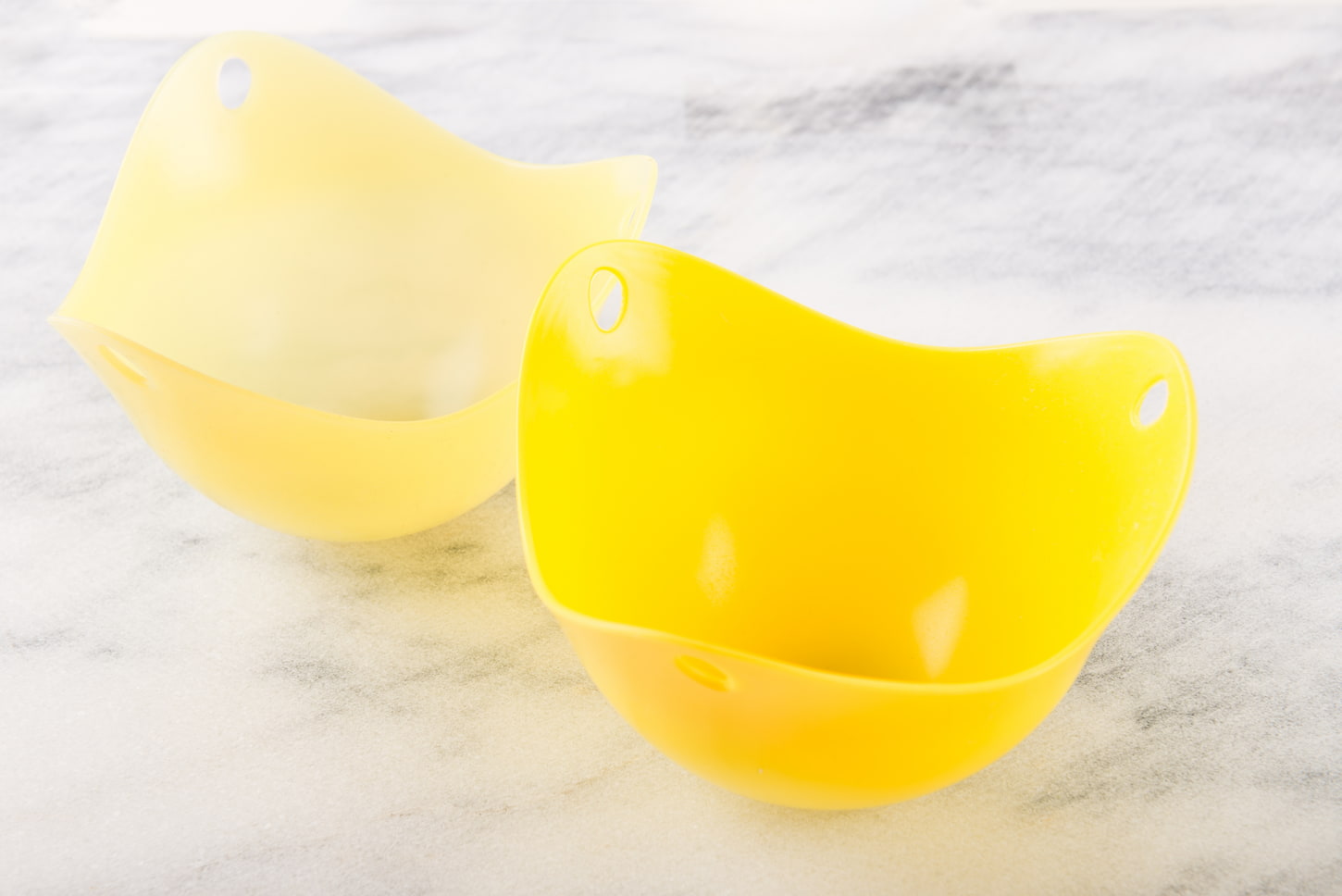Silicone is a durable manufactured material that we can use in many ways. It’s been widely embraced by the food world and is FDA-approved. For this and many more reasons, it’s an excellent accessory for enthusiastic freeze-dryers.
Silicone is safe and easy to use in a freeze-dryer because of its ability to withstand intense temperatures and its nonstick qualities. Silicone mats and molds are ideal for freeze-drying liquids or stickier foods, and/or pre-freezing them before running a cycle.
So, what kinds of benefits are there with silicone use in freeze-dryers? Read on to learn more about products suitable for freeze-drying and how to take care of freeze-dryer accessories.

Can You Use Silicone Mats in a Freeze Dryer?
Silicone mats are perfectly safe and fine to use in a freeze-dryer. Freeze-dryer owners can use specifically-made silicone mats for freeze-dryer trays or can cut down to size any silicone mats or molds already owned and used in baking.
The sugar content of some foods can result in sticky freeze-dried foods. For example, fruits such as peaches or pineapples can leave a syrupy residue behind.
Using a silicone mat in the freeze-dryer will make it much easier to remove foods since they don’t stick. It will also prevent stains from being left on freeze-dryer trays.
While name-brand freeze-dryer mats are available, silicone baking mats are okay. Due to its non-stick nature, silicone is popular among bakers, especially because silicone will keep its structure throughout cooking or freezing.
Silicone doesn’t melt or burn at high temperatures and is suitable for freezing, so we can use it safely with our freeze-dryers.
What makes silicone mats a valuable tool for freeze-drying? First, they can easily be cut to the size that best suits us.
Fun fact: you can freeze-dry fruits, candy, or yogurt on silicone mats. Here are our articles on how to freeze-dry fruit (coming soon), how to freeze-dry candy, and how to freeze-dry yogurt.
Ideally, we’ll measure our trays, then use scissors to cut the silicone mat carefully, so it fits snugly into each freeze-dryer tray. Make sure to have a big enough baking mat to fit the trays.
Due to their flexible structure, silicone mats easily peel off the freeze-dryer tray. In addition, a little pressure on the silicone mat will release freeze-dried foods, so we don’t have to spend time picking them off and don’t have to worry about them sticking to the mat.
Silicone mats are durable and will last longer if taken care of properly. However, while they vary in price, they are more expensive than other non-stick products.
This can be seen as an investment because we can use silicone mats repeatedly. In addition, they can easily be cleaned and don’t get discolored, so we can safely freeze-dry food for many years.
If you don’t have silicone mats already, I highly recommend you get the freeze-dryer tray silicone mats from Harvest Right. You can click this link to go shop for the right-sized mats now on their site.
Can You Use Silicone Molds in a Freeze Dryer?
Silicone molds are safe and fine to use in a freeze-dryer. They are perfect for freezing liquids or soft foods such as yogurt. In addition, molds are a great way of creating uniform frozen foods that are easy to pack.
Molds can be purchased made explicitly for freeze-dryers. They will fit snugly into the freeze-dryer trays. If we’re putting liquids straight into a freeze-dryer in the molds, it’s best to fill these while the trays are in the dryer to avoid spilling.
Alternatively, we can fill up a mold and pop it in the freezer to set it before transferring it to the freeze-dryer to dry out.
The flexibility of silicone molds means it’s easy to empty the contents. For example, we can flip the whole mold tray over, and the food will fall out. If they don’t fall out, apply a little pressure under the mold, and the food will pop out.
Be sure to use smaller molds (no larger than a small ice cube) for freeze-drying liquids, as large molds can take a very long time to freeze-dry.
If you don’t want to use silicone molds but still want to freeze-dry liquids, then it’s recommended to freeze the liquid before transferring it to the freeze-dryer tray.
Silicone molds are also a terrific way of maintaining the shape of the food when freeze-drying. This means the final product is easy to store because it can be stacked uniformly, especially when using rigid shell containers.
Molds are easy to store, and they can be stacked together. However, ensure the molds are completely dry before stacking or putting them away since we don’t want any bacteria to gather.
If you don’t have silicone molds already, I highly recommend you get the freeze-dryer molds from Harvest Right, as they’re designed to fit right on the trays. You can click this link to go shop for the right-sized molds now on their site.
How to Care For Silicone Used in a Freeze-Dryer
Silicone products can last for years when cared for properly. To do this, ensure they are thoroughly cleaned after use and allowed to dry completely. Don’t use scouring pads or abrasive cleaners since these will damage the silicone and compromise their non-stick abilities.
When washing silicone molds or mats, use warm water and dish-washing liquids. Ideally, a soap that will cut through grease is best.
If you struggle to remove any grease or residue, it’s safe to use white vinegar to clear remnants away.
It’s also vital to ensure the silicone is completely dry before putting it away or using it again. Air dry molds and mats and allow them to dry out for several hours completely.
It’s a good idea to lay molds and mats out flat while they dry and use a drying rack if possible.
When Should Silicone NOT Be Used in a Freeze-Dryer?
Silicone should not be used in a freeze-dryer when the mat or mold contains fillers. Due to its rise in popularity for cooking purposes, some lower-quality products are being created. These have fillers and are not all silicone – these fillers can be harmful to our health.
Fillers in silicone can produce toxins when exposed to increased temperatures in cooking or freeze-drying. If you notice a potent, unnatural smell from the silicone mold or mat, it could signify that they contain fillers.
The best way to ensure the silicone is safe is by using trusted brands. For example, Harvest Right has high-quality silicone mats and molds available (click here to go shop their site now). That’s where I prefer to buy my freeze-dryer supplies from.
But if you’d like to shop elsewhere, be sure to check the product description to confirm the silicone content, read customer reviews, and be willing to pay a higher price for a quality product.
It’s also important not to use silicone in a freeze-dryer if the mat or mold is damaged since rips or tears can harbor bacteria.
In this case, you can totally use parchment while you wait for your new silicone mats or molds to arrive. Read more about my research and experience using parchment in the freeze-dryer in this article here: Can You Use Parchment Paper in a Freeze-Dryer?

Key Takeaways and Next Steps
Silicone mats and molds are excellent materials for use in the freeze-dryer. The non-stick properties and durability mean you can easily freeze-dry food for many years to come.
While silicone is non-compostable, we can use it indefinitely if it’s taken care of properly. In addition, using molds and mats will make freeze-drying more convenient and save time on cleaning up.
It’s essential to buy the correct silicone products that are safe and FDA-approved when freeze-drying. You can click this link to go shop Harvest Right’s site for sales on silicone accessories.
Would you like to know more about freeze-drying? Check out these articles I wrote:
- Can You Make Money with a Freeze-Dryer? Complete Guide
- Harvest Right Freeze Dryer Size Comparison Guide
- 17 Reasons You Need a Freeze-Dryer
- How to Safely Store Freeze-dried Foods in Mason Jars (vacuum sealer)
Resources
Learning from your own experience is essential, but learning from others is also intelligent. These are the sources used in this article and our research to be more informed as homesteaders.
- “Harvest Right.” Harvest Right, harvestright.com/product/silicone-food-molds/. Accessed 20 June 2022.
- “How To Make Silicone Tray Liners For $16 // HARVEST RIGHT FREEZE DRYER Silicone Mat.” YouTube, 7 Feb. 2021, www.youtube.com/watch?v=YYBivfsnwIU.
- Nathan. “Making Silicone Mats for the 3-Tray Freeze Dryer.” FamilyCanning.Com, 14 Sept. 2017, www.familycanning.com/freeze-drying-posts/get-started/making-silicone-mats-for-the-3-tray-freeze-dryer.
- Newman, Sally. “What Is FDA Food Grade Silicone Made up Of?” Silicone Engineering, 16 Sept. 2021, silicone.co.uk/news/what-is-fda-food-grade-silicone-made-up-of/.
